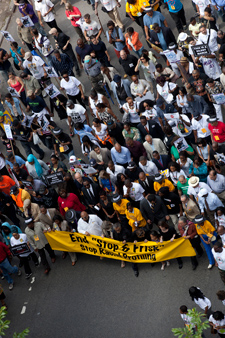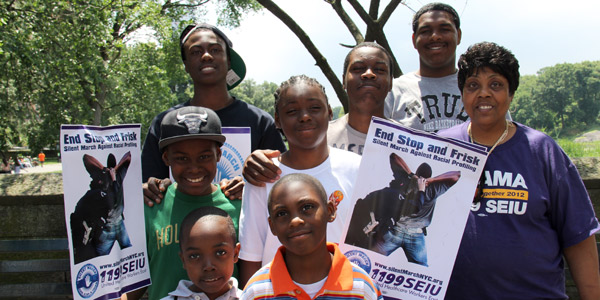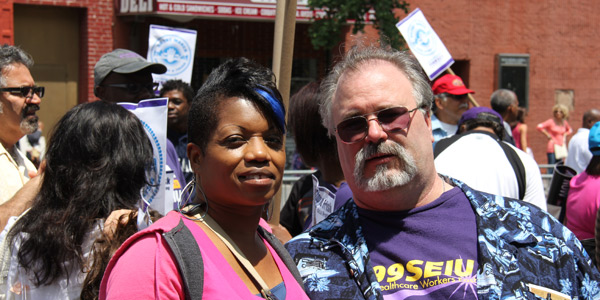Tens of Thousands March to End Stop-and-Frisk
June 18, 2012
Tens of thousands of demonstrators marched from Harlem to the Upper East Side home of billionaire Mayor Michael Bloomberg on Father’s Day, June 17, to protest the New York City Police Department’s discriminatory stop-and-frisk policy. At its height, the march stretched for 30 blocks, according to NY1 TV news.
The silent march, initiated by 1199SEIU, the NAACP and the National Action Network (NAN), was endorsed by 300 organizations and saw people of all colors and creeds, young and old, gay and straight, marching shoulder to shoulder to demand an end to a policy that stopped 685,724 New Yorkers last year. Almost nine in 10 are Black or Latino, and nine in 10 are totally innocent.
» View Photos
Black and Latino males between the ages of 14 and 24 account for 4.7 percent of the city’s population, but 41.6 percent of the stops in 2011. And although the retrieval of guns is the ostensible reason for the stops, no gun was retrieved in 99.9 percent of last year’s stops.
One of the most common signs in the march read “End Stop and Frisk” and was carried by several thousand 1199ers who came from as far as Massachusetts and Maryland.
“I’m here to support my New York brothers and sisters, but this is not just a New York issue,” said Sam Osebor, an 1199SEIU LPN at North Reading NH in Massachusetts. “Racial profiling takes place around the country.”
”My son-in-law has been humiliated by the police and I have a small grandson who I don’t want to have to go through the same thing,” said Lazar Hristic, an 1199er who recently retired from Elmhurst Hospital.
Liz Richardson traveled to the march on a bus from Poughkeepsie with her family and co-workers from Vassar Brothers Medical Center. She said, “I’m here with my sons and my grandsons. Today, is about making the world a safer place, a kinder place, a better place for them.”
1199SEIU President George Gresham was among the marchers in the lead contingent. Others included Donna Lieberman, New York Civil Liberties Union executive director; the Rev. Al Sharpton, NAN president; Benjamin Jealous, NAACP president ; Marion Wright Edelman, the Children’s Defense Fund president; Assemblyman Guillermo Linares and a host of leaders from the political, labor, rights and faith-based communities.
The march began in Harlem, an area where racial profiling is rampant. The march proceeded in silence and stretched beyond Fifth Avenue’s Museum Mile. Marchers walked solemnly past museum goers and many carried placards recalling slain youth such as Sean Bell and Amadou Diallo and calling for justice for the late Ramarley Graham, the son of 1199er Constance Malcolm. Graham, although unarmed, was shot dead in February by an NYPD officer in his grandmother’s apartment and in front of his six- year-old brother.
Peace and LGBT organizations, Jewish, Moslem and Christian leaders took part. The Occupy movement was well represented, with marchers from different regions.
SEIU 32BJ, Laborers International Union, United Federation of Teachers, the Postal
Workers Union and the United Auto Workers were among the unions with sizable contingents.
“This march is about our sons and husbands,” said Staten Island 1199er Marie Tyndale, a Rumsey Hospital appointment clerk. “At what point do we say enough? And it is not only our men who are profiled. I’ve been stopped in Staten Island while driving at night.”
“We’re calling upon the New York City Council to pass the Community Justice Act, which would help to end the abuses,” said the NYCLU’s Lieberman before the march. She said the marchers also are calling for an independent police inspector general.




